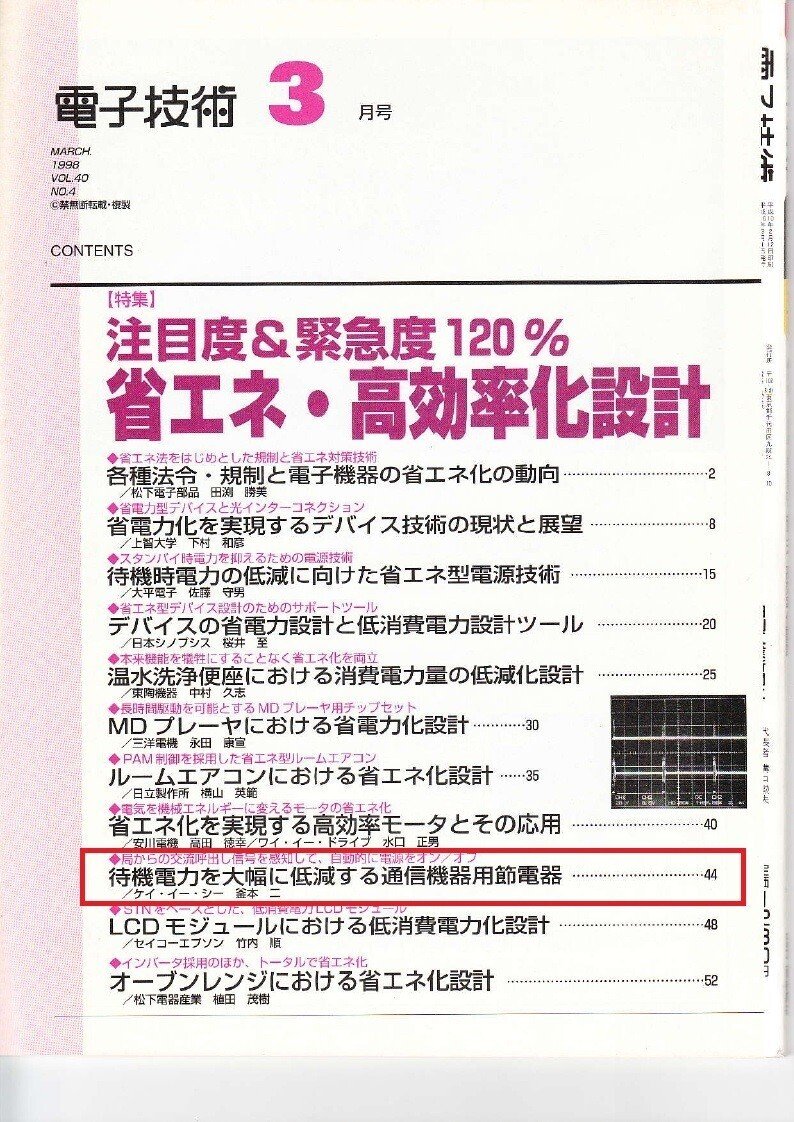
省エネ大賞受賞技術開発の軌跡 (21) Trajectory of Energy Conservation Grand Prize-winning Technology Development (21)
1.4.2 省資源・省エネルギー
ここで省エネルギーについて少し見てみます。
省資源/省エネルギー(conservation of resources and energy)とは産業・生活・社会活動全般における資源・エネルギーの効率利用を図ることです。このような課題は1973(昭和48)年10月に勃発した第4次中東戦争が原因で起こった1974年の第一次石油危機以降にわが国をはじめとする先進工業諸国できわめて現実的な政策課題として取り上げられるようになりました。そして1979年の第二次石油危機でさらに政策は強化されました。省資源・省エネルギー化を進める方策としては以下のことが考えられます。
(1)各産業における資源・エネルギーconsumption原単位の低下(省資源・省エネルギー技術の開発)
(2)製品利用の面での省資源・省エネルギー(耐用年数の延長・節電型テレビの普及等)
(3)資源の再利用の促進、
(4)エネルギー生産性の高い高付加価値産業の発展
1980年代に入って、エネルギー・石油需給が緩和基調となりました。とくに1986年以降は価格が大幅に下がったため省エネルギーは鈍化し、省エネルギーの重要さが忘れられがちになりました。長期的にも緩和基調が予想され経済的インセンティブは小さいのですが地球規模の環境問題で地球温暖化を防ぐための化石燃料の使用を制限する動きがあります。環境負荷を小さくするためにも省エネルギーが強調されるようになりました。すでに大幅に進んだ産業用はともかく増加を続けている民生用と輸送用の省エネが強く叫ばれるようになりました。
1993(平成5)年に資源エネルギー庁は第二次石油危機後の1979(昭和54)年に施行されたエネルギー使用合理化法(省エネ法)を改正しました。オフィス・ビルにも工場なみの省エネ対策の実施を義務づける方針が決められました。さらに省エネ徹底のため省エネ義務を怠った企業には罰金が科されます。その省エネ法改正の骨子は以下の通りです。
(1)一定量以上のエネルギーを消費する工場(指定工場)に使用状況報告を義務づける。
(2)非協力的な企業に対しては勧告や改善命令を出す。
(3)この命令に従わない企業には積極的に罰則を適用する。
続く

1.4.2 Resource and Energy Conservation
Let's take a look at energy conservation.
Conservation of resources and energy refers to the efficient use of resources and energy in industry, daily life, and social activities in general. This had been a very real policy issue in Japan and other industrialized countries since the first oil crisis in 1974, which was caused by the Fourth Middle East War that broke out in October 1973. The second oil crisis in 1979 further reinforced this policy. The following measures can be considered to promote resource and energy conservation.
(1) Reduction of resource and energy consumption intensity in each industry (development of resource- and energy-saving technologies)
(2) Resource and energy conservation in terms of product use (extension of service life, diffusion of energy-saving televisions, etc.)
(3) Promotion of resource reuse,
(4) Development of high value-added industries with high energy productivity
In the 1980s, energy and oil supply and demand began to ease. Especially after 1986, energy conservation slowed down as the prices dropped significantly, and the importance of energy conservation tended to be forgotten. Although the economic incentive was expected to continue to ease over the long term, there is a movement to restrict the use of fossil fuels to prevent global warming due to global-scale environmental issues. Energy conservation is also being emphasized to reduce the environmental burden. Aside from industrial use, which has already made significant progress, energy conservation for consumer and transportation use, which continues to increase, is now strongly called for.
In 1993, the Agency for Natural Resources and Energy revised the Act on the Rational Use of Energy (Energy Conservation Act), which was enacted in 1979 after the second oil crisis. It was decided to require offices and buildings to implement energy conservation measures comparable to those in factories. In addition, companies that fail to comply with their energy conservation obligations will be fined. The main points of the revision of the Energy Conservation Law are as follows.
(1) Factories that consume more than a certain amount of energy (designated factories) will be required to report on their energy usage.
(2) Recommendations and improvement orders will be issued to uncooperative companies.
(3) Positively apply penalties to companies that do not comply with these orders.
To be continued
この記事が気に入ったらサポートをしてみませんか?
